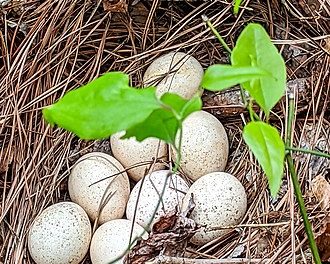The word ‘patent’ may bring to mind a new invention such as vacuum cleaner or engineering tool. But curiously you can also patent one of nature’s most fundamental life forms – a seed.

seed patents
Patents are used by plant breeders and agribusinesses to give them ownership of seeds they have created. These owners can then control the sale and use of their patented seeds. However, there has long been recognition that ownership of seed could threaten food security and biodiversity – as it restricts access to the patented seed and plant life.
So there are laws to protect us from a spread of seed ownership. But are these laws changing? And what are the consequences?
Below is a guide to the complicated world of seed patenting.
Why patent seeds?
Plants and animals have evolved over millions of years by natural selection and adaptation.
Man has learnt how to select from this broad biodiversity in order to breed plants with specific characteristics. Perhaps creating the biggest fruit, or the brightest flower. In farming crops, this selective breeding can create a plant best suited to the conditions in which it grows – drought or blight tolerant, for example.
Laws exist which control this process of selection and breeding.
The Nagoya protocol, for instance, ensures a fair and equitable sharing of the benefits which arise from the use of genetic resources such as plants. This means that if, for example, you use a wild Chilean strawberry plant to cross breed from, and you make money on the new breed, Chile is owed recompense for providing the original strawberry plant.
These laws also protect the intellectual property of the plant breeder and their new varieties.
What about patents?
Plant breeders can apply for a patent on a newly-created plant. As with any new invention, these patents provide ownership of a new ‘product’, to prevent replication, and to provide income from subsequent sales.
If a breeder has created a whole new plant species through genetic engineering, he can prevent others from the reproduction, use, sale and distribution of this newly invented plant. For example, Monsanto has produced plants which are ‘Roundup Ready’, by inserting a single gene which gives the plant resistance to the herbicidal spray Roundup. This single gene gives the plant a unique characteristic which has been defined by altering or inserting a single DNA sequence.
Agribusinesses, such as Monsanto and Syngenta, frequently apply for patents on the seeds and plants they have genetically engineered. It gives them monopoly rights subsequently over all seeds, plants and fruits with the same trait.
What if the ‘new’ plant has been bred – not by genetic engineering – but by conventional breeding processes?
European law originally stated that patents would not to be granted if a breeder used conventional processes. The argument being that the outcome was the result of a natural process, and that future breeders would also be able to work with the original plants.
So what has changed?
In March 2015, the EU Patent Board granted patents for two plants which had been bred conventionally, not genetically engineered. These were a tomato (which had low water content) and a broccoli (which had enhanced glucosinolates). This has unfortunately set a precedent for patents to be granted on conventionally produced plants, and their seeds.
Why is this not a good thing?
If a patent is granted on a plant, the breeder not only ‘owns’ the plant, but gets subsequent rights on all its genetic traits. This is logical if applied to genetically engineered plants, as those plants are defined by the specific trait present only in that species.

Say no to seed patents
If, however, patents are granted on the results of an open cross-breeding process, there will be many traits within the new plant which exist in other plants of the same species. Therefore a single patent, say on a simple cross-bred tomato plant, can de facto cover hundreds of tomato varieties. It will also cover its seeds, and potentially the seeds of other varieties. This could ultimately lead to one patent owner having legal rights to all tomato plants and seeds, for instance.
For the organic grower, indeed for all independent growers, this raises the risk of a legal challenge when saving and swapping seeds.
Other worrying consequences are reduced biodiversity, control of growers’ access, and – curiously – will hinder innovation (see Consequences of patenting plants and seeds below).
Who grants plant patents?
The European Patent Office (EPO). It is funded by the fees from patent applicants – such as Syngenta

European Patent Office
and Monsanto – and it is not answerable to the EU justice system. Instead we have a closed shop system, where the EPO benefits from applications. Indeed it is in its own vested interest to invite and grant patents.
Independent organisations such as No Patents on Seeds and Garden Organic are fighting to maintain the ruling that natural breeding processes cannot be patented, and to make the EPO made more accountable. To date, the European Commission is sympathetic.
The consequences of patenting crop plants and seeds
If the EPO continue to grant patents on seeds and plants bred by conventional processes, there are four important consequences:
- Increased prices for farmers and consumers Through the monopolisation of the seed market, small breeders will be edged out and the large agribusinesses will be free to determine the prices for their seeds, at the costs for farmers, and ultimately, consumers. The three biggest companies Monsanto, Dupont and Syngenta already control around 50 percent of the global proprietary seed market. They are the ones who will make the decisions on which plants will be bred, grown and harvested – and how much they will cost.
- Less innovation Contrary to the intended purpose, patents on seeds substantially hinder innovation. These patents can be used to block access to the biological diversity needed by other breeders and farmers to breed and grow. If permission is granted, a licence fee must be paid to the patent holder. And no further breeding can take place without permission of the patent holder.
- Less biodiversity & variety As the patent owners spread their control, there will be less access to diverse agricultural varieties for breeders and farmers. Growers will have restricted choices and gradually the diversity of species and genome types will decrease.
- Endangered food security Given reduced diversity, crops are less capable of adapting to diseases or changing environmental conditions (such as climate change). High agricultural biodiversity is essential for our food security.










